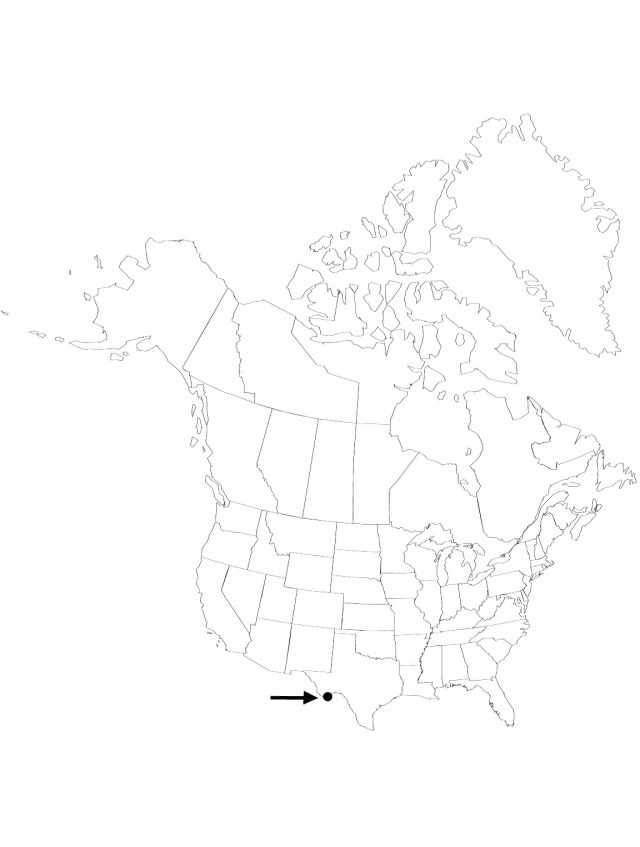Hechtia texensis
Proceedings of the American Academy of Arts and Sciences 20:374. 1885.
Plants 0.7–1.3 m in flower. Leaves pungent; blade to 44 × 1.5–4.5 cm. Inflorescences: staminate and pistillate inflorescences 2–3-pinnately compound, scaly; proximal primary bracts inconspicuous, shorter than lateral branches; lateral branches laxly to densely flowered, occasionally appearing capitate, 1–21.5 cm. Staminate flowers nearly sessile, scaly; floral bracts 4.5–7 mm, exceeded by sepals; sepals ovate to ovate-elliptic, 4.5–5 mm; petals 7.5–9 mm. Pistillate flowers subsessile, scaly; floral bracts 4–6 mm, exceeded by sepals; sepals ovate to broadly ovate, 4.5–7 mm; petals ovate, 7.5–10 mm; ovary almost wholly superior. Capsules 8.5–12.5 mm, scaly, glabrescent with age.
Phenology: Flowering spring–early summer.
Habitat: Dry limestone slopes and bedrock, gravely soils
Elevation: 600–1150 m
Discussion
Hechtia texensis was considered to be endemic to Texas and known only from the type collection, while all other collections from trans-Pecos Texas, except those of H. glomerata, were recognized as H. scariosa (D. S. Correll and M. C. Johnston 1970; L. B. Smith and R. J. Downs 1974). Hechtia texensis was distinguished from H. scariosa by sepal shape and size, using pistillate sepals from H. texensis and staminate sepals from H. scariosa. When flowers of the same sex from each taxon were compared, it was impossible to distinguish H. texensis from H. scariosa using sepal shape or other floral characters (K. Burt-Utley and J. F. Utley 1987).
Selected References
None.
